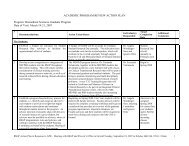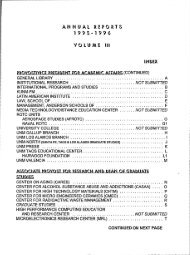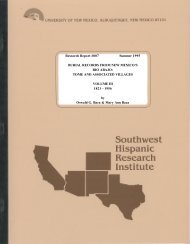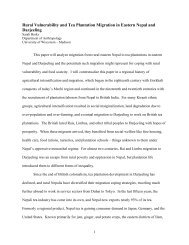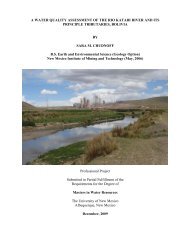i Jeffrey L. Engbers Health Exercise and Sports Science This ...
i Jeffrey L. Engbers Health Exercise and Sports Science This ...
i Jeffrey L. Engbers Health Exercise and Sports Science This ...
You also want an ePaper? Increase the reach of your titles
YUMPU automatically turns print PDFs into web optimized ePapers that Google loves.
CHAPTER II – REVIEW OF LITERATURE<br />
The purpose of this chapter is to review the current literature associated with<br />
NCAA Division III institutions <strong>and</strong> the position of athletic director at these institutions.<br />
<strong>This</strong> chapter will explore how this sport management position is truly different from AD<br />
positions in other Divisions. Chapter two is divided into the following topics: (1)<br />
Description of Liberal Arts Colleges, (2) Description of Intercollegiate Athletics, (3)<br />
Description of Division III Athletics, (4) Description of Division III Athletic Directors,<br />
(5) Preparation of Division III Athletic Directors, (6) Current issues affecting Division III<br />
Athletics, (7) Issues affecting the position of the Division III Athletic Director, <strong>and</strong> (8)<br />
Summary of Major Infractions at the Division III level.<br />
Description of Liberal Arts Colleges<br />
Liberal arts colleges make up a large portion of NCAA Division III institutions<br />
(Springer, Frank, & Reider, 2009). The over 500 liberal arts colleges in the United States<br />
offer quite a different model of education when compared with research institutions<br />
(Neely, 1999). Liberal arts colleges commonly exist in small towns, are private, <strong>and</strong> serve<br />
around 1,000 to 2,500 undergraduate students (Springer et al., 2009). They come in many<br />
varieties, including religiously-affiliated <strong>and</strong> secular, private <strong>and</strong> public, woman's <strong>and</strong> co-<br />
ed, undergraduate programs only <strong>and</strong> undergraduate with graduate programs, <strong>and</strong> large<br />
(up to 9,000 students) as well as small (under 1,000 students) (schoolsintheusa.com,<br />
2010).<br />
At their core, liberal arts colleges aim to provide an education that emphasizes<br />
teacher <strong>and</strong> student interaction. <strong>This</strong> is accomplished via small institution size, frequent<br />
faculty-student interaction, <strong>and</strong> dedication to undergraduate learning (collegenews.org,<br />
10










